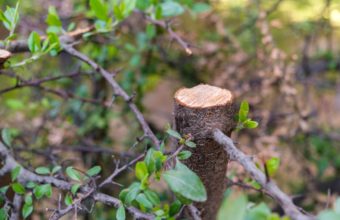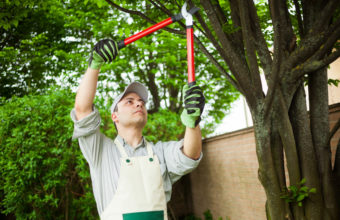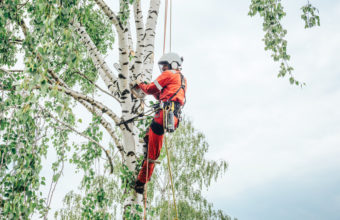Trimming a tree yourself can be done with the right tools, knowledge, and safety precautions.
Here’s a general guide on how to trim a tree…
1. Wear Safety Gear – Use appropriate safety gear, including gloves, eye protection, and a helmet if working at heights.
2. Gather the Right Tools – Use sharp and clean pruning shears for small branches. For larger branches, use a pruning saw or loppers. Consider a pole pruner or a pole saw for higher branches. Ensure all tools are well-maintained and in good working condition.
3. Identify the Purpose – Determine the purpose of trimming – whether it’s for shaping, removing dead/diseased wood, reducing size, or improving sunlight penetration.
4. Choose the Right Time – Select an appropriate time for pruning based on the tree species and local climate. Generally, late winter to early spring is ideal for many trees, but some can be pruned during the growing season.
5. Assess the Tree – Inspect the tree for dead, diseased, or damaged branches. Identify any branches that cross or rub against each other.
6. Prune Dead or Diseased Branches – Begin by removing dead or diseased branches first. Cut back to healthy wood just outside the branch collar.
7. Thin Out Excess Growth – Remove crowded or crossing branches to improve air circulation and sunlight penetration. Thin out the canopy to reduce density.
8. Reduce Size if Necessary – If you need to reduce the size of the tree, selectively cut back long branches using proper pruning techniques. Avoid removing more than 25-30% of the total foliage in a single pruning session.
9. Make Proper Cuts – Cut branches just outside the branch collar, leaving the collar intact. Use a three-cut technique for larger branches: make an undercut, followed by a top cut, and then a final cut outside the branch collar.
10. Minimize Stress – Pruning can be stressful for trees, so minimize stress by avoiding extreme pruning and providing adequate water before and after the trimming.
11. Clean Up Debris – Remove cut branches and debris from the site. Properly dispose of or compost the trimmings.
12. Step Back and Assess – Step back and assess the overall shape and balance of the tree. Make any additional cuts as needed.
13. Consult with Professionals – If you are unsure about the specific needs of a tree or if extensive pruning is required, consider consulting with a certified arborist or tree care professional.
Always prioritize safety, and if the tree is large or poses potential risks, it may be best to hire a professional tree care service for more extensive trimming or removal.






